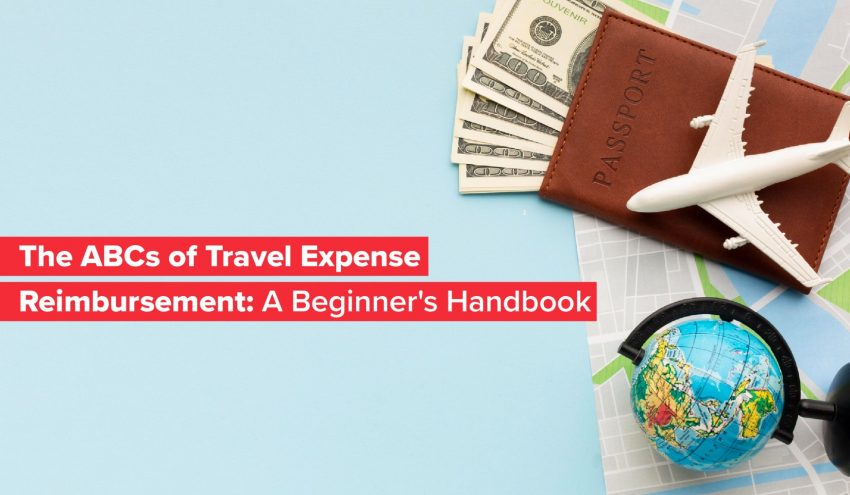Traveling for work can be an exciting adventure, but it often comes with a myriad of expenses. Fortunately, many employers offer travel expense reimbursement to ease the financial burden on their employees. In this beginner’s handbook, we’ll explore the world of travel expense reimbursement, understanding its intricacies, and learn about Zaggle EMS which can make the process much smoother.
Understanding Travel Expense Reimbursement
Travel Expense Reimbursement is a process where an employer reimburses an employee for expenses incurred during a business trip. These expenses can include transportation, accommodation, meals, and miscellaneous costs. Employees need to understand what is eligible for reimbursement and how to track and document these expenses properly.
Common Travel Expenses
Let’s break down the common travel expenses into four categories:
A. Transportation Expenses: Transportation expenses can include airfare, train tickets, car rentals, and even parking fees. For instance, a flight from Hyderabad to Mumbai or a taxi ride to the conference venue can fall under this category.
B. Accommodation Expenses: Accommodation expenses cover the costs of staying in hotels, Airbnb rentals, or other lodging options. Whether it’s a five-star hotel in Delhi or a cozy guest house in the city, these expenses are eligible for reimbursement.
C. Meals and Dining Expenses: This category covers the cost of food and dining while on a business trip. It includes breakfast, lunch, dinner, and even snacks. Whether you’re dining at a fancy restaurant or grabbing a quick sandwich on the go, these expenses add up.
D. Miscellaneous Expenses: Miscellaneous expenses can be a bit tricky, as they encompass a wide range of costs, from conference fees and dry cleaning to business calls and internet charges. It’s essential to keep track of these smaller expenses, as they can significantly impact your reimbursement.
Expense Tracking and Documentation
One of the main challenges in the travel expense reimbursement process is proper tracking and documentation. Keeping receipts and organizing expenses can be cumbersome, and paper records are prone to loss or damage.
One of the primary difficulties lies in the proper tracking and documentation of expenses. Keeping physical receipts and records can be cumbersome, leading to potential errors, lost paperwork, or delays in reimbursement. Efficient expense tracking and reporting are key to overcoming these challenges and ensuring a smooth reimbursement process.
This is where digital tools like Zaggle EMS play a crucial role, making the process more efficient and less error-prone.
A. Submitting Expense Reports
With Zaggle EMS, employees can submit expense reports conveniently, reducing paperwork and the risk of errors. Smart Scan, a feature within Zaggle EMS, allows you to create expenses by scanning receipts using OCR (Optical Character Recognition) technology. It’s available through the Zaggle mobile application. You can even attach up to three receipts per expense, making sure you have all the necessary documentation.
B. Reimbursement Process
Zaggle EMS streamlines the reimbursement process by providing a clear and structured platform for both employees and employers. It categorizes expenses, making it easier for organizations to understand where their money is going.
C. Approval Process
The approval process is a crucial step in the travel expense reimbursement journey, ensuring that expenses are legitimate and comply with company policies
Zaggle EMS allows you to establish a hierarchical or multi-stage approval flow to ensure expenses are reviewed by the right people in the organization. In Zaggle EMS, you can configure up to 5 levels of approval in your workflow. This flexibility accommodates the unique approval structures within various organizations, from small businesses to large enterprises.
The approval process is critical to maintaining financial responsibility within an organization and adhering to established policies. By configuring hierarchical approval flows, organizations can ensure that expense reports undergo the necessary scrutiny. Moreover, the flexibility in the number of approval levels and the ability to resubmit and approve rejected reports streamline the process, making travel expense reimbursement a transparent and accountable process for both employees and employers.
Tips for a Smooth Reimbursement Process
1. Stay Organized: Keep all your receipts in one place. Using digital tools like Zaggle EMS can help you store and organize them efficiently.
2. Submit Promptly: Don’t procrastinate in submitting your expense reports. The sooner you do, the quicker you’ll get reimbursed.
3. Know Your Company’s Policy: Familiarize yourself with your company’s reimbursement policy. Some expenses may have specific limits or requirements.
4. Double-check: Before submitting an expense report, double-check all the information. Accuracy is crucial to avoid any delays.
Conclusion
Travel expense reimbursement doesn’t have to be a daunting process. With the right knowledge and tools, such as Zaggle EMS, you can simplify the task of tracking, documenting, and reporting your expenses. By understanding the ABCs of travel expense reimbursement, you can make your business trips financially stress-free and focus on the work at hand. Remember, the key to a smooth reimbursement process is organization and the use of efficient digital tools. Safe travels!


